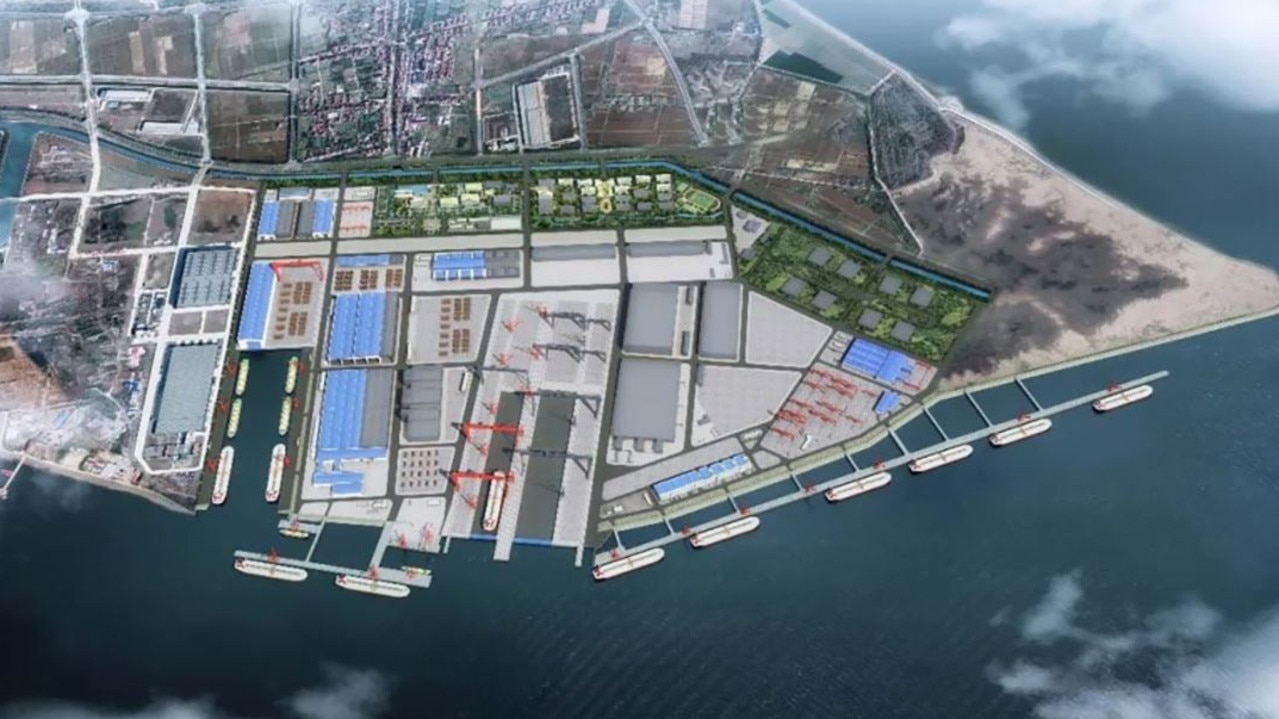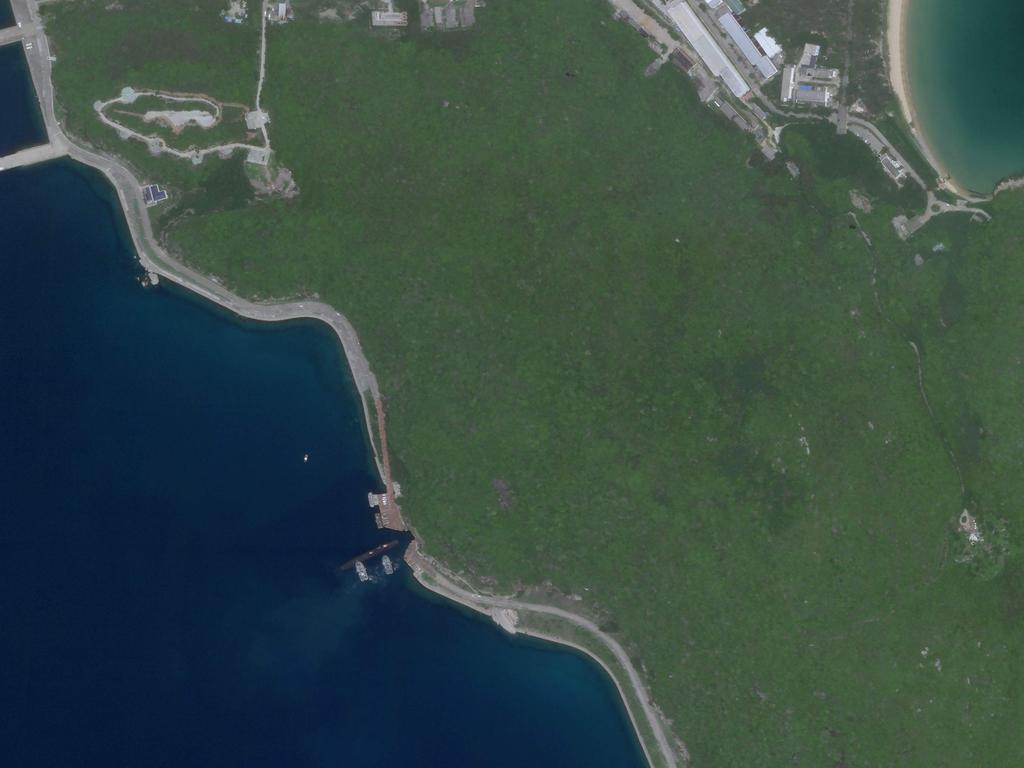China satellite photos reveal their latest sophisticated aircraft carrier
A huge operation is underway in China and if they pull it off they will have the largest and most capable carrier in their already impressive fleet.
Beijing’s “accelerated” aircraft-carrier building program is bearing fruit – with new satellite photos revealing its first fully combat-capable vessel racing towards completion.
“2021 is a year full of expectations, including the Type 003 aircraft carrier and also the H-20 bomber. It is time for our technological development to bear fruit,” the Chinese Communist Party (CCP) controlled Global Times declares.
“Judging from the current construction status, China’s Type 003 aircraft carrier could be only a few months away from its launch before the end of 2021, and it could enter naval service around 2025”.
Commercial satellite and open-source acquired photographs appear to bear this out.
Well ... slowly the images of the latest progress on the Type 003 aircraft carrier's construction are getting better! ðŸ‘
— @Rupprecht_A (@RupprechtDeino) January 18, 2021
(via VESSEL/SDF) pic.twitter.com/RgLWXeyy1R
Type 003 is yet to have its official name announced.
Its main hull modules have been brought together in its purpose-built Shanghai’s Jiangnan Shipyard dry dock. Assembly of the three-storey high hangar in which its aircraft and helicopters will be housed is well underway. Next will come the flight deck and control tower.
Once completed, it will be the largest and most capable carrier in China’s fleet – operating some 40 combat aircraft of various types.
RELATED: ‘Counterstrike’: China threatens Australia

Whether it is a one-off stepping stone ship or the first of a series of similar designs is unknown. But Chairman Xi Jinping’s ambition to possess fully-fledged nuclear powered supercarriers like those operated by the United States has been widely broadcast.
ACCELERATED BUILD
Chinese defence magazine Ordnance Industry Science Technology (OIST) states final assembly of Type 003 will be much quicker than its smaller predecessor, Type 002 (Since named Shandong). “Since the blocks are built in advance, the assembly and the outfitting work will take much less time,” the weekend report states.
OIST indicates the hull will be ready for launch before the end of 2021.
Beijing’s propaganda machine appears to expect so.
Last week, the state-controlled CCTV television channel broadcast what seemed to be the shape of an aircraft carrier under a red blanket, with a caption stating: “We expect in 2021.”
RELATED: China’s shameless move to exploit US chaos

However, it will likely take another three years before the aircraft carrier is ready for operations, as its electronics must be installed and calibrated. These will then need extensive at-sea tests.
China currently has two training aircraft carriers in service – the PLAN Liaoning and Shandong. A fourth is believed to already be in the early stages of construction.
But all eyes are on the latest photos of Type 003.
It appears to be about 285m long. It will likely weigh somewhere in the region of 80,000 tons. Once completed, it will be similar in size and capability to the USS Kitty Hawk class of conventional-fuelled aircraft carriers launched in 1960.
Speculation persists, however, that Type 003 may come equipped with next-generation electromagnetic catapults able to launch heavily laden aircraft quickly and efficiently. The prominent ski-ramp on existing Chinese carriers places severe limitations on the weight of the aircraft launched.
SPEED BUMPS
Not all is going to plan.
China’s carrier construction program’s former head has been charged with corruption and expelled from the CCP. Hu Wenming, former chairman of the China Shipbuilding Industry Corporation, has been accused before Communist Party-controlled courts of taking bribes and abusing his power.
He is the second official related to the aircraft carrier project to face such accusations.
But corruption is the go-to excuse when the CCP desires to express its “displeasure” with dissenting – or unsuccessful – party officials. Without admitting such division or failure.
China’s aircraft carrier program may not be the wild success Beijing’s propagandists proclaim it to be.
“Reports of technical difficulties with the (Type 003)s does not preclude the ships from being assembled, but it could mean that their final fitting-out and sea trials will take much longer than expected to complete,” Stashwick states.
He points to the trials and tribulations of the United States Navy’s new aircraft carrier, USS Gerald R. Ford as an example of “first-in-class” technical hurdles. The nuclear-powered supercarrier was launched in 2013.
Its in-service date has again been pushed back, this time to 2022, amid ongoing troubles with its advanced electromagnetic catapult, weapons hoists and aircraft-catching gear.

That hasn’t affected Beijing’s desire to match the US design before the end of the decade.
“The (Type 004) design is especially challenging because it is expected to be PLAN’s first nuclear-powered surface ship,” Asia-Pacific security analyst Steven Stashwick writes. “The expanding Jiangnan shipyard might signal optimism in the (Type 004) ’s design, but if not, China could opt to build a third (Type 003).”
But China’s shipbuilding capacity is about to take a giant leap forward.
According to the South China Morning Post (a Hong Kong-based publication now subject to the same CCP control as the Global Times), the Jiangnan shipyard in Shandong is adding a 240ha facility including a new design and research centre, workshops, fabrication factories, quays, and other infrastructure.
A giant new floating dock is already in place. A massive new dry dock and repair facility is also nearing completion on Hainan Island, China’s gateway to the South China Sea.
Stashwick says such work “appears to be focused on the aircraft carrier building program”.

NUMBER OF THE BEASTS
China already has more warships afloat than the United States.
“(It) has the largest navy in the world, with an overall battle force of approximately 350 ships and submarines including over 130 major surface combatants,” the Department of Defence announced last year. For its part, the US Navy has a force of about 293 vessels.
That gap is set to grow.
“The floating dock and new base project all indicate that China needs more space for new warship building because the existing shipyard in Shanghai’s Changxing Island is too crowded,” Lu Li-Shih, a former instructor at Taiwan’s Naval Academy in Kaohsiung, told the SCMP.
In October, the Fifth Communist Party Plenum issued a five-year plan putting renewed emphasis on its deepwater navy. Based on its transcripts, the US Congressional Research Service estimates that China will build another 65 warships in the next decade alone.
Therapist: PLA Navy surface combatant growth isn't real, PLAN combatant growth can't hurt you.
— Rick Joe (@RickJoe_PLA) November 17, 2020
PLAN 14th five year plan prediction: pic.twitter.com/6AVMseX0WM
“There is also the elephant in the room,” writes China military analyst Rick Joe. “It seems the majority of past foreign projections of Chinese military and Chinese navy procurement scale and speed have been underestimated.”
The five-year plan calls for the launch of another 16 guided missile destroyers between now and 2025, five Type 075 helicopter-carrying assault ships, and at least 20 guided-missile frigates. An undefined number of new-design assault carriers and frigates are also expected to appear.
Joe recently wrote in T he Diplomat that Beijing’s aircraft carrier ambitions remain undefined at official levels. But their capacity to build them is enormous.
“Having built the CV-17 Shandong at Dalian, and currently building carrier 003 at Jiangnan, China is in the rather unique situation of being the only nation in the world that has demonstrated more than one shipyard capable of producing aircraft carriers,” Joe writes.
“The pace of carrier construction between 2021-2025 is not known, but it is likely that a two carrier-yard will come into play in some form going forwards.”
Jamie Seidel is a freelance writer | @JamieSeidel




